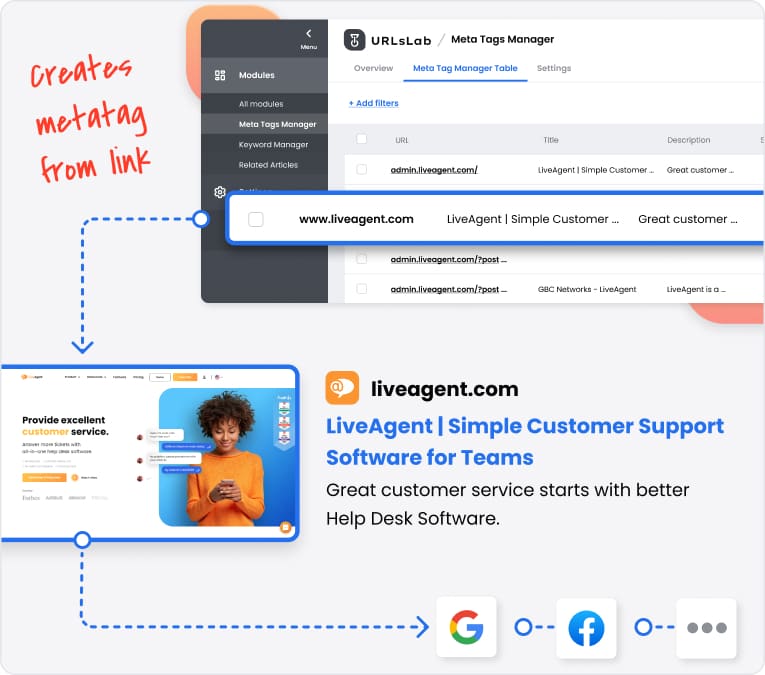Noindex Tag
A noindex tag is an HTML Meta tag or HTTP header used to prevent search engines from indexing specific web pages, helping manage site visibility and avoid duplicate content issues.
Noindex tag
- Why are noindex tags important?
- Types of noindex tags
- Examples of noindex tags
- Example 1
- Example 2
- Example 3
- Handy tips about noindex tags
- Don’t use them on main pages
- Duplicate content
- Remove the tag when needed
- Conclusion:
- Frequently Asked Questions:
- Can I use more than one tag i.e., noindex and nofollow in one page?
- Is the use of noindex tags detrimental to my website’s SEO efforts?
- How can I check if a page is tagged as noindex?


What is a noindex tag?
The “noindex tag” can be defined as an HTML Meta tag used by website owners and SEO professionals to instruct search engine bots or crawlers not to include a specific webpage in their index. Incorporated in the head section of an HTML document, a noindex tag is an influential tool when it comes to controlling the visibility of individual website pages on search engines.
Understanding the noindex tag requires to understand the indexing process. When search engine bots crawl a website, they index – or list – its pages, to remember and retrieve when needed. However, there may be occasions where a website owner might not want a particular page to appear in search results, hence the use of a noindex tag.
The noindex tag comes in handy for preventing the indexing of duplicate content, sensitive information, or pages under development. Therefore, the tag carries significant weight in the SEO world as it directly influences a website’s visibility and online presence.
Why are noindex tags important?
So, why should a noindex tag matter to you? The answer lies in its capacity to control your website’s digital footprint. The tag determines which pages are visible on search engines, which shapes the user experience, can maintain your site’s credibility, and guide the web traffic flow.
Firstly, the noindex tag can be used to manage duplicate content across your website, ensuring that search engines don’t penalize you for having similar information on multiple pages. For instance, if your site has a printable version of a webpage, you may want to noindex that page to avoid a duplicate content penalty.
Secondly, by intelligently using the noindex tag, you can direct users and search engines’ attention to your most valuable, high-quality, and original content, thus improving your website’s overall SEO performance. In addition to this, the tag has implications for e-commerce website owners who often have to deal with product pages with little to no unique content.
Types of noindex tags
It’s also essential to understand that there are different types of noindex instructions – the Meta Robots Noindex and X-Robots-Tag. Their functionality is similar, but their use can vary based on the specific requirement.
The Meta Robots Noindex is the most common type and is placed within individual HTML pages that you wish to prevent from being indexed. On the other hand, the X-Robots-Tag can be included in the HTTP header response for a given URL, or it can apply to a specific file type across an entire site.
In most scenarios, the application of the more commonly used Meta Robots Noindex would suffice. However, technical SEO scenarios such as preventing images or PDFs from being indexed would require the implementation of the X-Robots-Tag.
Examples of noindex tags
Example 1
Using noindex in an HTML page:
<meta name="robots" content="noindex">
Example 2
Instructing specific search engines bots to not index a page:
<meta name="googlebot" content="noindex">
Example 3
Blocking indexing of a PDF through HTTP headers:
X-Robots-Tag: noindex
Handy tips about noindex tags
While using noindex tags can be extremely beneficial, one needs to be careful. Incorrect use of these tags can lead to significant indexing problems, making your website or important pages invisible to search engines. Here are some tips to use noindex wisely:
Don’t use them on main pages
Never place a noindex tag on your main pages that you want to rank.
Duplicate content
Use them for duplicate content, login pages, admin pages, or thank you pages that do not need to be ranked.
Remove the tag when needed
Remember to remove the noindex tag if you decide a page should now be indexed.
Conclusion:
A noindex tag is an essential tool that helps controlling a website’s online visibility. From understanding the concept and importance of a noindex tag to its applications and types, along with examples, we have explored the different facets of this SEO component.
It’s crucial to remember that, despite the benefits, a noindex tag can accidentally damage your website’s ranking if misused, so use them wisely and remain aware of their status on your site.
Frequently asked questions
- Can I use more than one tag i.e., noindex and nofollow in one page?
Yes, you can combine noindex with other tags such as nofollow. For example: instructs search engines not to index the page and not to follow any links on it.
- Is the use of noindex tags detrimental to my website’s SEO efforts?
No, noindex tags are not harmful if used correctly. They help control which pages are indexed. However, misusing them on important pages you want to rank can hurt your visibility and rankings.
- How can I check if a page is tagged as noindex?
You can check if a page is tagged as noindex by viewing the page’s source code for a meta robots tag with 'noindex' or by checking HTTP headers for an X-Robots-Tag directive.
Master Noindex Tags for Better SEO
Control your website’s visibility and optimize SEO by learning how and when to use noindex tags effectively.


